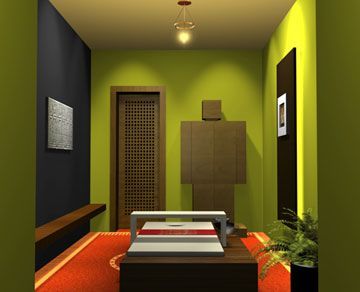Shiatsu Nurturing Bodywork Therapy

Shiatsu's roots could be related to dokido methods from the early dojo (martial art) tradition. Kenwa Tae was an established karate student at that time. It is possible that the Ian, which was written in 1912, had a significant influence in the evolution of this practice. The full story of Shiatsuatsu's beginnings isn't well-known. The art can be gleaned through the work of Katsuaki Hyashi and then from Koichi Tohei.
Shiatsu is an ancient Japanese culture that goes in around the year 16thcentury. It is believed that shiatsu came about because the practicer's tendency to rub their hands by squeezing them. It's not certain if it was designed to convey a meaning of shiatsu as a technique, or just an explanation of the method. Some consider that, at the root of the term, shiatsu means "of myriad meridians" that are located in the body, and are connected with each other. This could have been intended as an explanation of the technique's effectiveness, and not as a reference to the meridians as such.
Shiatsu has been considered to be a part and integral part of Japanese tradition. It was originally practiced only at private residences and did not receive any official recognition. The practice is taught today in it's Japanese tradition. It's one of the only eastern techniques to gain official recognition in the West, outside of those who are primarily focused upon Hatha Yoga or Raja Yoga.
Modern western medicine has two varieties of shiatsu "dry" and "hot" varieties. Although shiatsu was mild in its day, modern variations of shiatsu have more strength and may be used to supplement or replace Western medicine. For example, in the form of hot therapy shiatsu therapy, the practitioner will apply heat to specific areas in the human body. 출장안마 This may be applied to the acupuncture points as also. There is also more vigorous Chinese style shiatsu that is sometimes known as qigong-style shiatsu.
Shiatsu has grown in the western world over the past several years. Many spas and salons now provide Shiatsu massage. Many spas boast that they are able to provide the knowledge and expertise of this particular therapy. Although there are no governing bodies to oversee these schools, they do have schools that teach shiatsu. The schools typically offer the traditional Chinese treatment, but with elements of Reiki and other types of energy-based work being are also incorporated.
The Shiatsu practice is often misunderstood with traditional japanese therapies such as acupressure and acupuncture. In reality, they are completely different. Acupuncture relies on the belief that energy flow through meridians which is why shiatsu utilizes acupressure energy flow to assist patients. Acupressure however is utilized to help treat muscles of patients, whereas shiatsu uses both hands on the body to help the patient to relax.

Shiatsu methods may have roots on traditional japanese treatments, however they are far different. Shiatsu techniques that are done using a holistic, hands-on approach using elbows fingers, thumbs, and sometimes feet are described as tae Kwon San, universal toning, or universal hands healing. This type of Shiatsu techniques use the whole body in order to improve balance and strength of meridians that run through the body. Distant healing is a term to describe Shiatsu techniques which rely on your fingers, elbows and palms. Shiatsu treatments that heal distantly require the hands and feet.
Both forms of Shiatsuatsu start with cleansing. It is usually followed by an assessment of the patient's health to determine the type of treatment that would be most effective. Once the diagnosis has been made and the treatment is usually started with an assessment of the flow of energy and how it relates to the patient's meridians. Traditional Chinese medicine, the main regions affected by chi are the throat, chest, lymph nodes and abdomen spleen, liver, gall bladder, colon and. These areas can also be included in Namikoshi.
